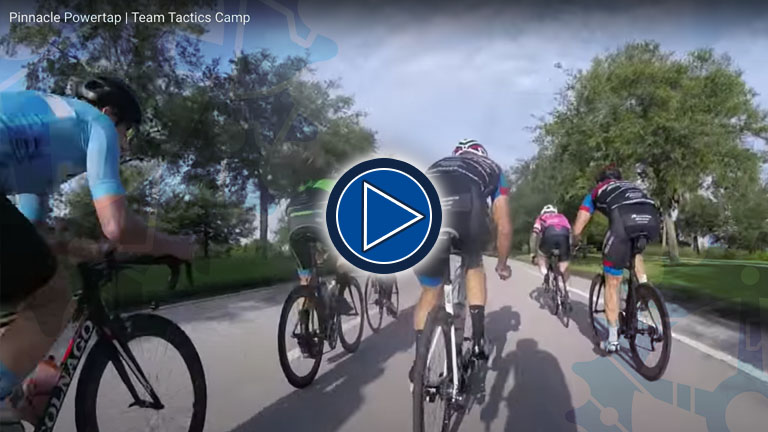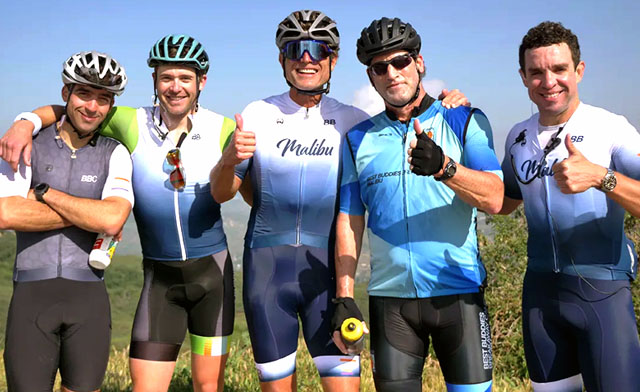New Season, Try a New Approach
Last season is roughly a month old and your motivation for next season is higher than ever. This is a very common trend that surfaces this time each year. The purpose of this blog it to offer up a new perspective with correlating data points to help you make this coming year your best. As you go through the substance below and begin to map a plan be realistic but most importantly, be honest with yourself. I am suggesting that you stretch with regard to personal goals and expectations, just don't lose sight of the countless variables you carry on your plate over the course of a season. To streamline this process I selected talking points that make up the pillars behind a successful plan.
GOALS- Do you Have them and What are They?
If you are your intention is to venture away from riding and start training, you will need to identify goals. No goals means no direction, no direction equates to limited growth. To start this process its useful to take a quick assessment. Look back at previous goals you had and how you preformed. Learn from those experiences and make changes with regard to your preparation. As you chart your course its vital to understand that doing what you have always done doesn't necessarily equate to the same results. Your body changes as does life.
Establishing tangible goals serves as a catalyst when it comes to developing an effective training plan. Do not short change yourself with this one, take it serious and identify goals that if achieved would mean something to you on a personal level. Leverage each workout and every day as an opportunity to continue working towards your goals. With the training comes focus, an outlet that undoubtedly drives you internally. My suggestion is to cherish the journey as its the only sure thing. Learn to live in the journey because as you know, it doesnt matter how prepared you may be, results are never a given.
What are your training patterns and how successful are they?
Data is extremely useful for this one but most racers are intuitive enough to identify their patterns without data markers. The issue lies in the fact that they continue to repeat the patterns year over year. Understanding your patterns and essentially the why behind those cycles is invaluable. A very common trend for athletes in this state is to see a quick spike in training volume through the months of December, January, and February. With that spike in training stress come some of their best peak power values for the entire season. The quandary with this one is that marque events in this state land in late March, early April/ late May and in October. By the time they make it to April they are on fumes due to the fact that they have held a high level of fitness for too long of a period of time. Holding a high level of fitness over consecutive months without adequate recovery leads to burn out, injury, and a diminished motivation. My suggestion is to identify when in the season you returned your best concentration of peak power values as this offers up a very usable reference point. Once you have identified this point in time scroll back 6-8 weeks and look at weekly IF/TSS (Intensity Factor/ Training Stress Scores) gross ride time, time spent in specific training zones, and most importantly your overall fitness/fatigue levels (CTL/TSB) during that span of time. The best way to identify your optimum fitness and fatigue levels as they relate to peak power values over the season is to overlay peak power values with the Performance Management Chart (see below image). You can learn more about the PMC here-PMC Overview Via TP. Once you have secured tangible data points as they relate to peak power and (CTL/TSB) for certain time frames zero in on the specific bike related workouts and the races you were participating in during that period of time. Understanding the drivers behind the power data and the correlating physiological adaptions that took place allows you to be more efficient with the planning of workouts for this years plan.

Notice the concentrations of peak 5 and 20 minute values following a very positive TSB.
What's Your Greatest Limiter?
Detecting your greatest limiter and categorizing how that weakness aligns with events of interest needs to be a priority. A great entry point for this one is the universal benchmark, functional threshold power. FTP is essentially the power you can sustain for the duration of 60 minutes. Your FTP/your weight in Kg predicates the level you can be competitive on. For argument sake lets say you have great nuromuscular power (5-30 seconds) and good repeat-ability within that range but a sub-par FTP. This in essence limits you when it comes to the types of events you can target and the manner you can race them. In this instance the athletes early season plan should be centralized on workouts that will work to remedy this. On the other end of the spectrum, lets just say you are planning to target crits and your FTP is on par with your peers but your nuromuscular power is non-existent. In this case, its time to hit the weight room and lay the framework to develop that strength. There are a few ways to identify limiters as they relate to power. The quickest is to view your power profile on Training Peaks. This graph (see below) allows you to compare your peak values to your peers. Another option is to go out and test the various ranges in a stand-alone workout. This protocol is used to evaluate fatigue profiling. Fatigue profiling compares power within ranges of duration taken to be representative of the same physiological abilities, to gain insight into a riders relative strengths and weaknesses and to understand how well they can resist different forms of fatigue.

Clearly that of an all a-rounder and a respectable one at that for a masters athlete.
Focusing on your entire power profile and designing a periodized training plan to address your greatest limiters is a great first step but I urge you to not neglect looking at your current body composition and eventually your weight. If you find that your weight fluctuates and you have a hard time finding the ideal balance, now is the time to start to peel back the layers and address it. Look at your current power profile and take 3-4 Kg (6.6-8-8 lbs) off your weight and redo the calculations/ranking. When it comes to category 3-4 riders and masters athletes this little exercise paints a rather vivid picture.
You have time on your side, take a step back and look at last year and use the above reference points to plot a strategic return to training. These are very simple steps that can help you make this upcoming season your best. If you have trouble sorting your data or need another set of eyes, call or email me.


